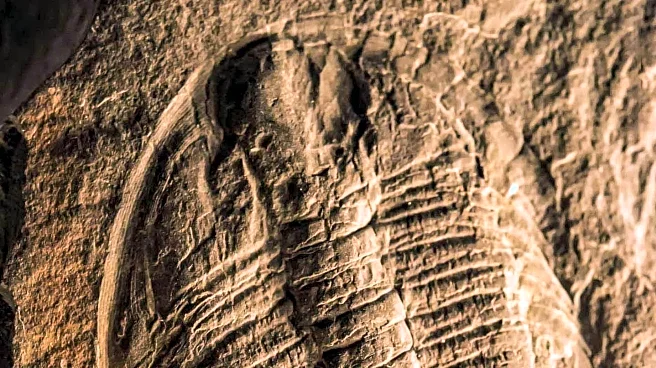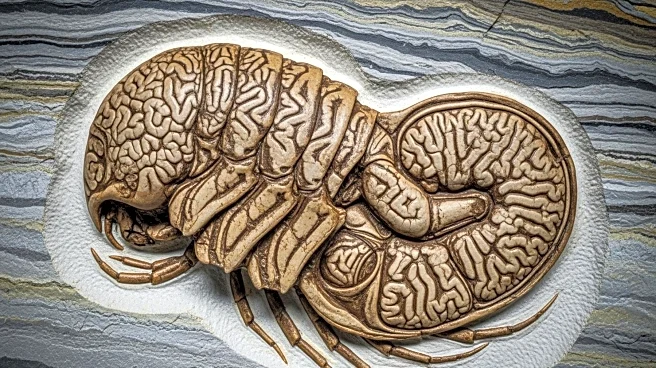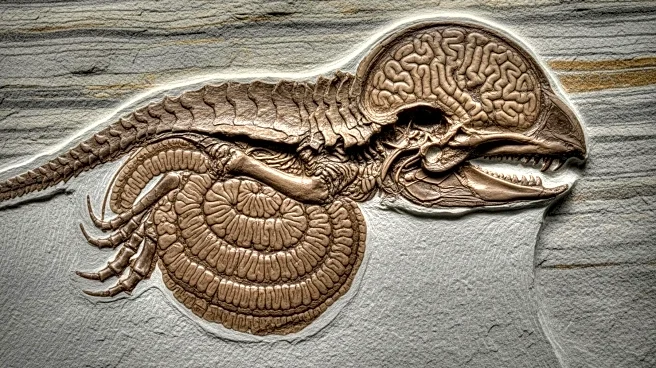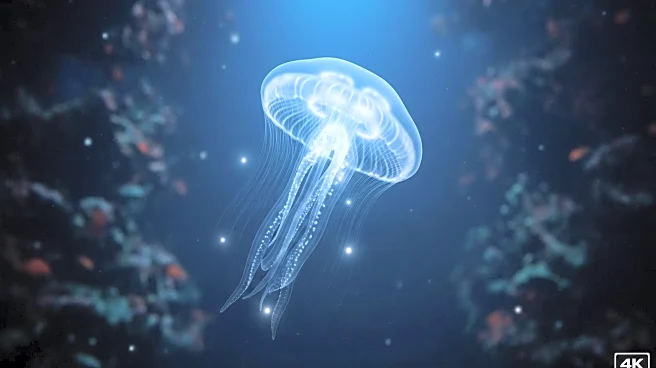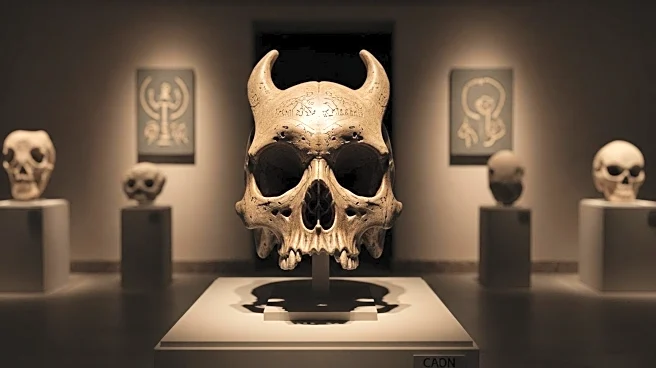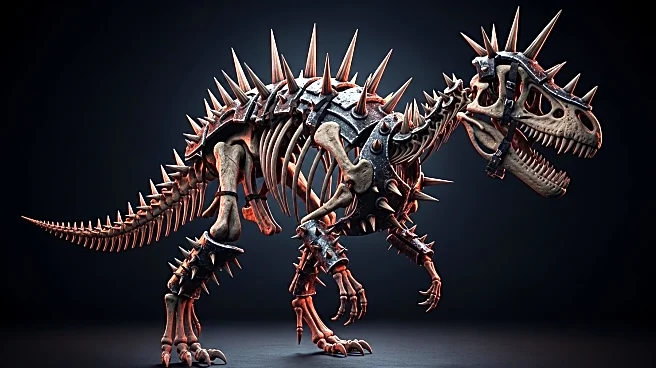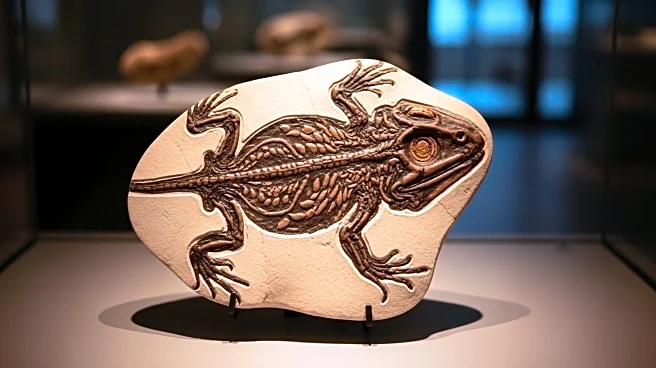What's Happening?
Researchers have discovered a 520-million-year-old fossil of an arthropod larva with remarkably preserved soft tissues, including a brain, digestive glands, circulatory system, and nerve traces. This discovery, made possible through synchrotron X-ray tomography, provides a detailed look at the internal anatomy of early arthropods, revealing a complexity previously underestimated. The fossil, described as having 'almost perfect preservation,' offers a rare glimpse into the Cambrian Explosion, a period known for rapid evolutionary development. The study, led by Martin Smith, highlights the significance of developmental data in understanding arthropod evolution, with the preserved brain structure, known as the protocerebrum, showing evolutionary links to modern arthropod features.
Why It's Important?
This discovery is significant as it challenges previous assumptions about the complexity of early arthropods, suggesting they were more advanced than previously thought. The preservation of soft tissues in such detail is rare, providing invaluable insights into the evolutionary history of arthropods, a group that includes insects, arachnids, and crustaceans. Understanding the development of these early creatures can shed light on the evolutionary processes that have allowed arthropods to become one of the most diverse and successful groups of animals on Earth. This find could influence future research directions in paleontology and evolutionary biology, potentially leading to new theories about the development of complex life forms.
What's Next?
The discovery is likely to prompt further research into the Cambrian period and the evolutionary history of arthropods. Scientists may focus on finding more fossils with similar preservation to expand the understanding of early animal life. The use of advanced imaging techniques like synchrotron X-ray tomography could become more prevalent in paleontological studies, allowing researchers to explore fossilized remains in unprecedented detail. This could lead to new discoveries about the anatomy and development of ancient species, providing a clearer picture of the evolutionary pathways that have shaped modern biodiversity.
Beyond the Headlines
The ethical and cultural implications of such discoveries include the potential for increased public interest in paleontology and evolutionary science. This could lead to greater support for scientific research and education, fostering a deeper appreciation for the history of life on Earth. Additionally, the use of advanced technology in uncovering these ancient secrets highlights the intersection of science and technology, showcasing how modern tools can unlock the mysteries of the past.
